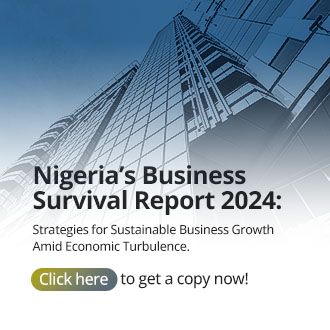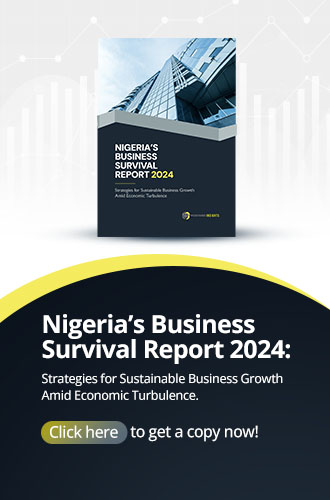How Nigeria’s Pension Fund Administrators Can Increase Returns while Driving Infrastructure Development
According to the Nigerian Pension Commission (PenCom), there are eighteen (18) registered Pension Fund Administrators (PFAs), eight (8) Closed Pension Fund Administrators (CPFAs), and three (3) Pension Fund Custodians (PFCs). Together, they manage 9,862,129 Retirement Savings Accounts (RSAs) to the tune of US$33.4 billion or NGN14.99 trillion. This sum represents as much as 28.9% of the nation’s nominal GDP as at Q3 of 2022. The PFAs are also structured in a multi-fund scheme from Fund I to Fund VI. These determine the risk profile of the different funds.

Every employee is aware of the fact that they would not work forever. Most governments have legal retirement ages after which people are not allowed to stay in employment anymore. Hence the need for a pension plan: a system that requires all employers to make contributions to an employee’s pool of funds which has been set aside for retirement. This is a defined-contribution plan; the employer makes regularly scheduled contributions to the employee’s pension plan, deducted from wages. Another system is the defined-benefit plan, where the employees is guaranteed specific monthly payments for life after retiring.
Pension funds tend to work with the former plan. A pension fund is a pool of contributions from employers, into which the defined contributions of multiple employees are accumulated. These funds are managed by professional pension fund managers or administrators, who can use the capital accumulated in the fund to invest on the behalf of an employee. As a result, pension funds can often hold vast sums and are significant institutional investors.
Nigeria’s Pension Structure
According to the Nigerian Pension Commission (PenCom), there are eighteen (18) registered Pension Fund Administrators (PFAs), eight (8) Closed Pension Fund Administrators (CPFAs), and three (3) Pension Fund Custodians (PFCs). Together, they manage 9,862,129 Retirement Savings Accounts (RSAs) to the tune of US$33.4 billion or NGN14.99 trillion. This sum represents as much as 28.9% of the nation’s nominal GDP as at Q3 of 2022. The PFAs are also structured in a multi-fund scheme from Fund I to Fund VI. These determine the risk profile of the different funds.
Fund I is an aggressive fund which invests from 20% to as high as 80% of pension funds in a mix of fixed and variable income instruments, while Fund IV is an ultra-conservative fund which invests only as high as 10% of pension funds and mostly in government-backed fixed income instruments. Fund V is designed mainly for the informal space and self-employed individuals, while Fund VI is for RSA owners who prefer ethical, non-interest-bearing instruments. The final fund, Fund VI Retiree is set for active retirees who still wish to contribute to a pension fund. The bulk of pension funds are held in Funds I, II, III, and IV, along with Closed Pension Fund Administrators (CPFAs). CPFAs are defined benefits pension schemes which existed prior to the introduction of the current Contributory Pension Scheme (CPS) and have been allowed to continue existing, but cannot add new RSAs.
Insights on PFA investments
Analysis of public data published by PenCom reveal some interesting information:
- The bulk of pension funds are held in Funds II and III, balanced and slightly conservative funds, with Fund II holding 43.4% of all pension funds and Fund III holding 27.7%;
- There is a huge preference for investments in debt securities over equity. A vast majority of all funds are invested in government-backed fixed income securities, with 61.5% of all funds being invested in federal government bonds;
- The preponderance for debt securities extends to the corporate sector, where 10.9% of all funds are held in either held-to-maturity corporate bonds (9.02%) or available-for-sale bonds (1.83%);
- 12.96% of all funds are held in fixed deposits, while 6.06%, overwhelmingly from Fund II, are invested in domestic stock.
Calculations carried out by Pension Nigeria, a private firm which monitors the Nigerian pension industry, show the Fund I, II, III, and IV yielded an average return on investment (ROI) of 9.95% in 2022. This figure is considerably lower than the country’s average inflation rate in the same year, which was 18.77%, according to the Central Bank of Nigeria. This indicates that when adjusted for inflation, PFAs made a negative return on investment.
How much caution is too much; alternative investments
One might argue that the ROI would be much higher if there wasn’t such an obvious bias towards safe fixed income instruments such as bonds and treasury bills. However, pension funds are different from other institutional investors such as mutual funds, commercial banks, hedge funds or sovereign wealth funds. The nature of pension funds dictate that they should be more careful, avoiding the volatile, high-risk investments that a hedge fund might go for.
PFAs and the RSA owners could be persuaded to invest in the areas of infrastructure, energy, transportation, or private equity. Presently, infrastructure accounts for 0.75% of pension fund investment, with real estate holding 1.45% and 0.32% in private equity. Increasing investment in developmental sectors can help drive growth, while at the same time avoiding the volatility of the stock market, providing long-term positive returns.
A percentage of pension funds held in bonds with a maturity period of five to fifteen years could instead be invested in the construction of a power plant. Within the same period of the maturity of the bond, the power plant could be built and begin producing, thus bringing back returns to the pension fund. In this way, Nigeria, and other African countries, could take an example from countries like Australia, the Netherlands, and Switzerland, where as much as 25% of all pension funds are invested in infrastructure and private equity.
It is important to not view pension funds as one may view the other institutional investors listed earlier: pensions are not funds available to be used recklessly. However, shifting more pension funds from the financial sector to low-risk real sectors such as energy, agriculture, and water will not only present a source of safe, consistent, positive returns, but can also help boost economic growth and individual wellbeing among citizens.
Thoughts?
We won't share your email address. All fields are required.
